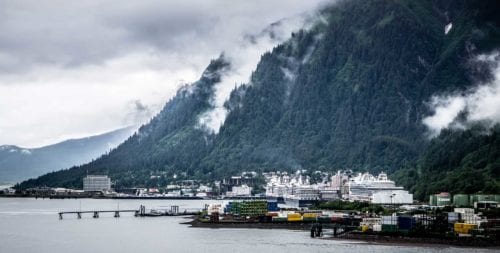
Empowering Utilities to Participate in the Clean-Energy Transition – Part 1
Part 1: Renewable Heating in Juneau, Alaska
This is the first blog in a three-part series.
One of the central challenges in effectively managing the transition of the energy grid toward a more distributed and decarbonized orientation is ensuring that utilities actively engage and lead by example and innovation, rather than remain on the sidelines or resist it. This is the emphasis of a large portion of the work of Rocky Mountain Institute’s Electricity practice, and can be observed most directly at the Institute’s annual Electricity Innovation Lab (e-Lab) Accelerator event. This year’s convening, held in Sundance, Utah, in May, was no different.
Of the 13 teams that came to Accelerator this year, four were focused on innovations in utility business models and operating strategies. While the specific project objectives of each of these teams were different, each is working to speed the electrification of vehicles or space and water heating in buildings. These teams—comprised of utility representatives, regulators, advocates, and government officials—illustrate the varied and knotty hurdles utilities must overcome to remain key players in the evolving energy grid of the future.
The Juneau Renewable Heating team is a good example. The group came to Accelerator to craft a solution to meet the unique constraints of their home base. The Alaskan state capital is a small community of about 30,000 people with its own electric grid, and is only supplied by boat or airplane. The team’s goal is to address the area’s winter heating needs with renewable energy, driven by Juneau’s 2045 goal of meeting 80 percent of total energy use—including for transportation, heating, and electricity—with renewable energy.
While Juneau’s electric supply is fueled by clean, renewable hydroelectric energy, 80 percent of its heating needs are supplied by heating oil that must be transported into the city by barge. And while electric heating would take advantage of their 100 percent renewable grid, hydroelectric generation capacity doesn’t align well with peak load—heating demand peaks in the winter when the water flows into a reservoir slow down as cold temperatures turn water resources icy.
In attempting to supply heating needs with renewable sources, team champion Alaska Electric Light and Power Co. isn’t planning to build new generation capacity yet; doing so would mean making a large infrastructure investment, and customers would be committed to paying for the investment for years to come, even if electric heating demand doesn’t grow. Instead, the utility is focused on first switching users of lower-efficiency resistance heating system to higher-efficiency electric heat pumps, freeing up capacity for customers using oil for heating to switch to heat pumps. In that way, the community would be maximizing the potential of its current hydroelectric generation capacity before paying to build new facilities.
A key resolution emerging from the team’s time together at Accelerator was to move away from top-down policies and actions to reframe around individual customer decision-making.
“If you’re going to get an entire city to make a change away from oil heating to electric heating, there are going to be a lot of individual customer decisions needed to make that happen,” said Anthony Teixeira, RMI’s facilitator for the team.
While the team originally sought to map a strategic transition plan out to 2045, they decided that making early progress to build momentum was equally important. The team came up with a dual approach in the near term, creating and showcasing examples of success over the next few years while also defining the later phases of the roadmap.
For example, rather than using only utility-led incentive programs to drive engagement in Juneau, the team agreed it would be beneficial to also work closely with local community and stakeholder groups to relay how this electrification work can help them meet other critical goals, and build momentum through partnerships with champions at the grass-roots level.
While new generation supply will be needed at a future date, likely through higher hydroelectric capacity, this investment can be deferred by more strongly embracing energy efficiency. By employing efficiency technologies more heavily, the Juneau team can build in more time to create momentum for customer switching and increase the public’s confidence in the effort. Many of the team’s members also participated in e-Lab Accelerator 2015 to spur transportation electrification and electric vehicle adoption and have been encouraged by the reception that team’s efforts received from the community—including many residents buying electric vehicles—so they hope to build on this success.
How to encapsulate this large scope of work in a message that every Juneau resident will appreciate? Community pride and the value of local leadership resounds strongly in Juneau. Because the oil used for heating is shipped by barge from Washington State, doing away with that dependency appeals to the very Alaskan spirit of independence and self-sufficiency. Effectively framing the team’s work to appeal to this belief should help them make progress on their very ambitious scope of clean energy in America’s “Last Frontier.”
